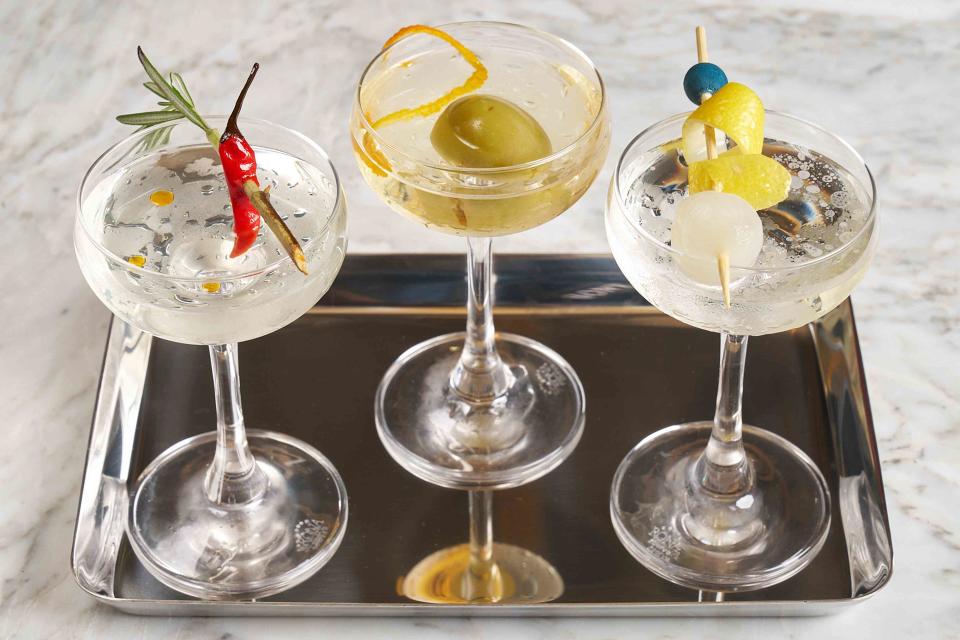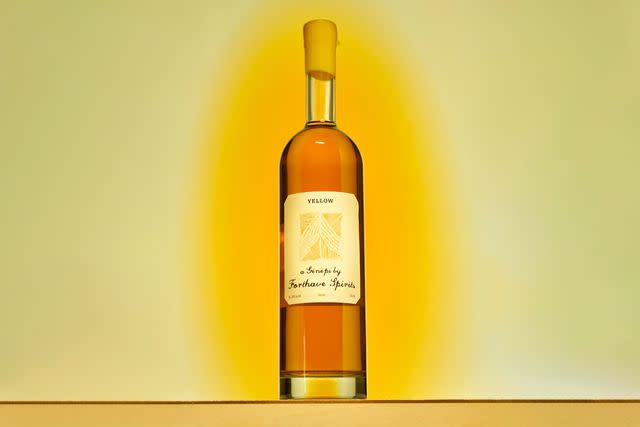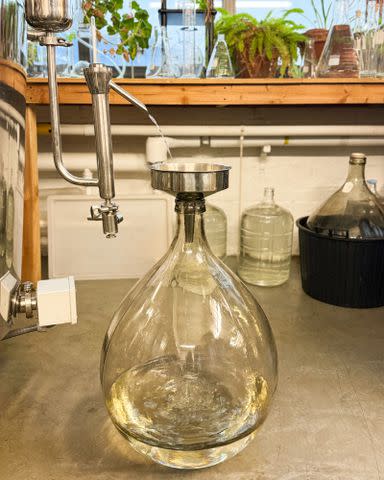Why You're About to See This Alpine Liqueur on Menus Everywhere
How exactly did we get from Negroni mania and the American amaro renaissance to genepy Martinis?

Douglas Lyle Thompson for Smith & Mills Rockefeller Center
Now that we’ve collectively explored just how many ways (bottled, canned, on tap, and with chocolate) a Negroni can be served, it makes sense to assume that the American drinker’s love affair (or love-bombing, simply based on the number of Negroni-themed candles I’ve come across lately) with bitter flavors created the perfect climate for the rise of genepy. This slightly floral, minty, and bracing herbal liqueur made from the eponymous plant native to the Alps has been making more frequent appearances on cocktail menus and bottle shops around the country. While it’s easy to tie its popularity to a growing fondness for bitter flavors, genepy’s success story is a bit more nuanced.
“I remember the time when people thought Fernet Branca was the most disgusting thing, and no one wanted to drink a Negroni,” says Estelle Bossy, beverage director at Le Rock, a brasserie in New York City. “I think the popularity of amaro shows the pendulum of palates swinging towards the bitter, and wrapped up in bitter is the herbal.” Genepy’s medicinal quality also may tap, even unconsciously, into what she calls “the resurgence of wellness, and an interest in the herbal and apothecary.”
Bossy, who spent years in the Savoy region of the French Alps, is something of a genepy evangelist. She recalls adding it to hot chocolate after a long day on the slopes, or simply enjoying sips alongside a few squares of chocolate, which she considers to be an ideal pairing. At Le Rock, she uses it in a simple yet stunning cocktail with rhum, lime juice, and a lush garnish of fresh herbs. Her tidy cocktail list at Frenchette Bakery’s new outpost in the Whitney Museum of Modern Art features a genepy highball.
Related: Why Is Everyone Drinking Chartreuse This Summer?
When Bossy was first dreaming up the cocktail program at Le Rock, she says she had “no idea” that the Chartreuse shortage (which made headlines in 2019 after the Carthusian monks who produce the herbal liqueur announced that they would not be able to keep pace with the exploding demand) would “snowball” in the way that it has. “I feel like we’ve been able to take people’s love for Chartreuse and spread it to adjacent categories, and genepy is definitely one of them,” she says.
But across the U.S., bartenders are taking advantage of the liqueur’s unique ability to mimic what so many customers are craving when they order Chartreuse. “It’s got that same woody, herbal intensity,” says Rob Krueger, beverage director at Smith & Mills in New York City. “Plus, it packs a real punch in terms of alcohol content, and a tiny little sip is a wake-up call.”
Tradition and hubris dictate that when Americans start to get excited about a wine, spirit, or liqueur from Europe (bonus points if it’s French or Italian), they’ll try making it. The 2010s were a peak time for American amaro, with producers like Forthave Spirits, St. Agrestis and Lo-Fi Aperitifs putting their flair on the classic Italian digestif. It’s not hard to see how genepy is now ripe for the same sort of innovation.

Forthave Spirits
“Commercially available genepy is high spirit, high sugar,” says Daniel de la Nuez, co-founder of Forthave Spirits, which released its first genepy, named Yellow, in 2020. By teaming up with New York-based natural winery Barbichette to blend Alpine genepy flower infusions with Seyval Blanc (a hybrid grape with a neutral flavor profile) de la Nuez and his partner, Aaron Fox, have created an of-the-moment low-alcohol, wine-based genepy that boasts notes of chamomile, honeysuckle, and mint.
“Back when we released it in 2020, genepy wasn’t very well known except for with bartenders and sommeliers. Now, distributors from Chicago to Louisiana are asking us about their allocation for Yellow," de la Nuez says, adding, "It’s also really popular in Japan.”
While Forthave imports its genepy flowers from the Alps, Fox and de la Nuez have ambitions of planting and growing the plant stateside at a high-altitude location, to make a truly American version and expand production.
“When we came to market, we joked that this was the quickest way not to make any money,” says Jon Langley, another New York-based distiller who, along with his business partner Lucky Preksto, makes gin, amaro, and genepy under the label January Spirits. The duo were pleasantly surprised when their New York-made genepy won double-gold for best herbal liqueur in the 2023 New Orleans Spirits Competition. “The American market has turned towards bigger, more interesting flavors, especially with amari,” Preksto explains. “It’s surprising, because it’s a pretty austere sort of drink.”

Forthave Spirits
To make genepy seem more exciting to customers who remain unfamiliar or intimidated by its flavor, bartenders are integrating it into classic drinks and combining it with familiar spirits. Rob Krueger encourages cautious patrons to buy a bottle and freeze it, which numbs the intensity of the flavor. Meanwhile, at Birds of Paradise in Boston, genepy plays a minty counterpart to tropical soursop fruit Martini. The Bar Room at the Modern uses it in a simple concoction with vodka and clarified apple juice. Bossy (who names Wisconsin distiller Heirloom Liqueurs as one of her favorite genepy producers) sees the liqueur’s potential to zhush up a White Negroni. In warmer weather, she’s known to make a genepy spritz with Prosecco, or a drier, more mineral-driven sparkler.
“The library of herbal liqueurs is really opening,” says Bossy. “I don’t see the interest tapering down anytime soon.”
For more Food & Wine news, make sure to sign up for our newsletter!
Read the original article on Food & Wine.

